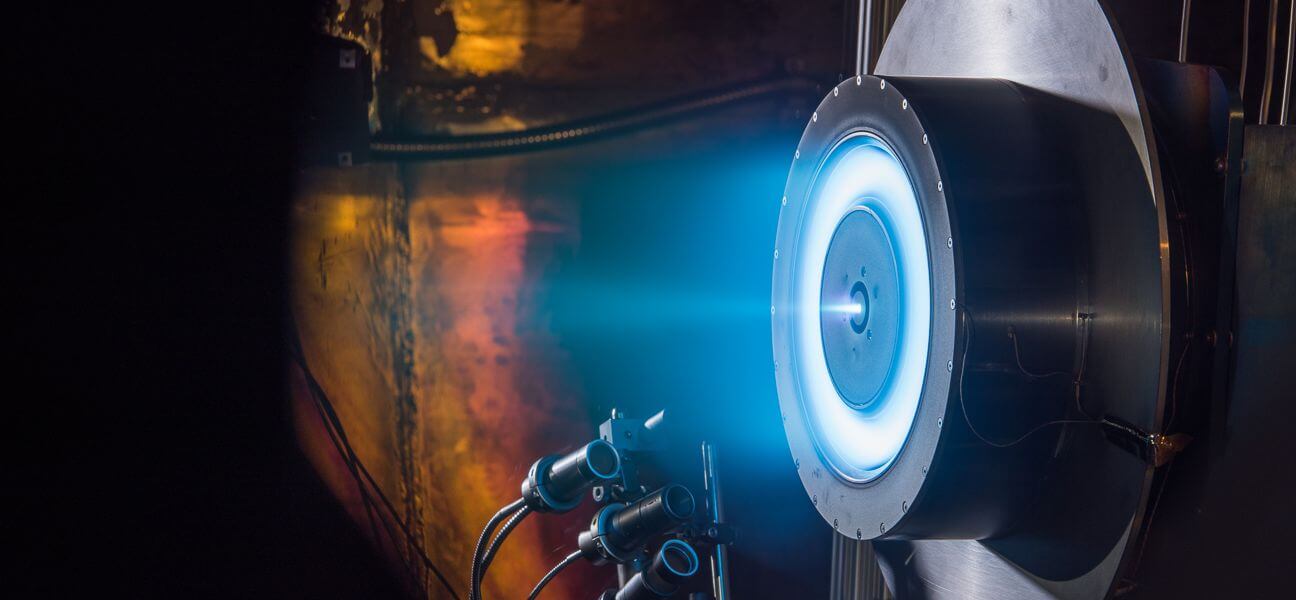
Developed by the University of Michigan and the United States air force new ion engine for the X3 space Agency NASA has set a new efficiency record. Against the background of these news, some experts eyes lit up, and they are all as one assume that such technology would one day be used to deliver people to Mars.
The X3 engine is the so-called type accelerators Hall. To create a propulsion impulse this setup creates a directed flow of ions. Generated inside the special chamber, the plasma which is ejected outside of the vehicle, according to NASA, will allow to give the spacecraft a greater level of acceleration compared to the more traditional chemical rocket engines.
The most efficient chemical rocket engines (HRD) allow to accelerate the spacecraft to a speed of about 5 kilometers per second, in turn, the accelerator Hall is able to accelerate to 40 kilometers per second. Such efficiency would be extremely useful for potentially long-duration space flight, such as to Mars. And according to people involved in the project ion engine, with this technology over the next 20 years we will be able to open the way for manned flights to the red planet.
It is believed that ion engines can be much more effective than a regular HRD but also more economical as they require the use of a smaller volume of fuel to transport the same number of crew and equipment over long distances. As commented the head of the project development of ion thruster Alec Gallimore portal Space.com, ion acceleration can provide up to 10 times longer coverage distances when using HRD with the same amount of fuel.
Of course, in addition to ion propulsion, there are other types of promising technologies, further development of which can lead humanity to a new round of the conquered space. Perhaps the most important disadvantage of those traditional HRD is the need to deliver into space a huge amount of chemical fuel, which of course increases the total mass of the spacecraft. The extra mass requires extra fuel, extra fuel increases the weight, and so on. There is a variant of the ramjet accelerator Bussard, which is essentially a fusion rocket engine that uses hydrogen to outer space as fuel. In theory, the engine is able to accelerate to almost the speed of light, but its extremely low efficiency due to the peculiarities of the design of the spacecraft leaves the project under a very big question. What is electromagnetic engine that is on everyone’s lips lately? Around it now raises more questions than answers. And until we figure out how he is able to work, and scientists really have no idea how, then the best hope is not necessary.
Fans of science fiction probably enthusiastically would suggest using an idea that would allow space travel faster than the speed of light – warp. However, General relativity tells us that nothing can travel faster than light. However, if we can find a way to somehow compress and expand the fabric of space-time in front and behind us, then in theory we really can move faster than the speed of light. But while modern science agree that we don’t even come close to such technology.
Back to ion engines. Recent tests of the accelerator X3 showed that the installation is capable of operating at a power of 100 kW and generate about 5.4 Newton’s of force, which is currently the highest efficiency for any ion plasma engine. He also broke the record for power output and indicators of the operating current. This success has led some to assume that technology in the next 20 years will be used to deliver people to Mars. But is it all that great? There is probably only partly.
Compared to the same HRD, ion engines are able to create a very small amount of acceleration. In other words, to achieve the same rate of speed, which demonstrates a chemical rocket engine, ion takes much longer to work. This, in turn, allows the use of ion engines, for example, as a starter, at launch from Earth.
Engineers attempt to solve these problems with a new ion engine X3, where instead of a single channel for discharge of the accelerating plasma, the use of several. The current objective of the project is to develop at the same time quite a powerful and compact engine. The fact that the original prototype turned out very dimensional. While most established accelerators in the Lobby, you can manually migrate the lab, X3 has to move with the help of a small crane.
In 2018 engineers are going to hold a new series of tests and eventually look at the job engine that will operate for 100 hours without interruption. Engineers also are developing a system of shielding that will protect the walls of the accelerator from exposure to hot plasma, which will allow the engine to run much longer, perhaps even for several years.
Ion engine NASA showed a new record performance
Nikolai Khizhnyak